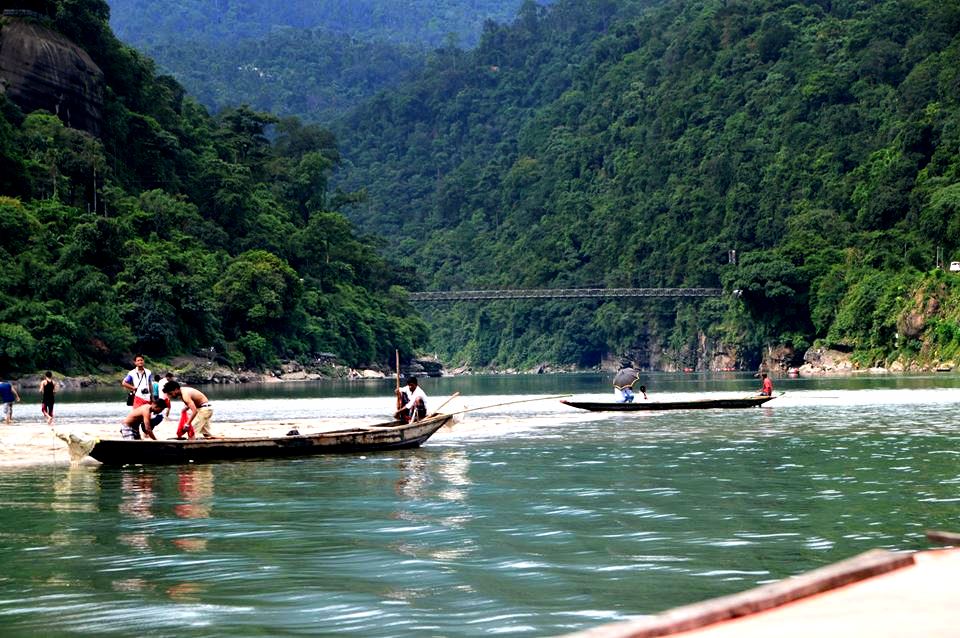
Let’s visit Jaflong, the daughter of nature.
History of Jaflong:
According to historians, Jaflong was a secluded forest under the Khasia Jainta-Raja for many thousands of years. Although the Khasia-Jainta kingdom came to an end with the abolition of zamindari system in 1954, large areas of Jaflong fell for several years. Later, traders started coming to Jaflong by water from different areas in search of stones, and as the stone trade expanded, new settlements were formed.
During the liberation war of Bangladesh in 1971, the camp of the freedom fighters in Sylhet was at Dauki in India across the Jaflong border. On 13 July an armed contingent of members of the EPR and the East Bengal Regiment entered Jaflong. A group of Pakistani soldiers was at the house of Razakar Aziruddin in the Bangladesh part downstream of the Piain River. After two rounds of fighting between the two sides, five Pakistani soldiers were killed and the Pakistanis fled. At the same time two freedom fighters were also injured. Besides, large scale battles were fought on the Sari river near Jaflong. And in this way Jaflong became free from the enemy. And today Jaflong has become one of the most important places in Bangladesh. The mass graves of the martyrs of the liberation war are next to the customs office of Tamabil land port.
Description of Jaflong:
Jaflong is located in the border area of Sylhet, Bangladesh. On the other side of it is the Daoki region of India. The Daoki River enters Bangladesh through the Jaflong from the hills of the Daoki region. Jaflong is located in the Piain River Basin. The Jaflong-Tamabil-Lalkhan area of Sylhet district has hilly cliffs. Sedimentary rocks have been exposed in this eruption, so there have been several geological surveys conducted by Bangladesh.
There are four types of hard rock found in Bangladesh, among them Bholaganj-Jaflong hard rock pebbles. In addition, during the monsoons, when heavy rains fall on the hills of the Shillong Plateau on the Indian border, the strong currents of the Daoki River carry large boulders from those hills. That is why a lot of rocks are found in the river Jaflong in Sylhet area. And the livelihood of a large part of the people of this area has been developed around the extraction and processing of this stone.
Apart from stones, plain or porcelain has also been found in Jaflong, although there is no infrastructure to purify the soil or sand.
Just as ordinary Bengalis live in this area, so do the tribes. Jaflong has 5 Khasia Punjis across Balla, Sangrampunji, Nakshiapunji, Lamapunji and Pratappur. According to the census, 1,953 Khasia tribes live in Jaflong.
Spectacular content:
Standing on the Bangladesh border of Jaflong, one can see the high mountain ranges within the Indian border. The waterfall coming down from these hills is one of the tourist attractions. Besides, the suspension bridge of Dauki port in India also attracts many people. Besides, the spiraling Daoki river also attracts tourists. Due to the monsoon, heavy rains along the Indian border caused the river to overflow and the river regained its vitality, making it more picturesque. The clarity of the water of Daoki river is also one of the attractions of Jaflong. On the first Baishakh, the Baishakhi Mela is organized in Jaflong around the Bengali New Year. The whole area became famous for the festival surrounding this fair. In the rainy season and winter, the beauty of Jaflong is different. During the monsoon season, rainforests and rapids are a sight to behold. Moreover, the view of the clouds at the top of the hill is quite beautiful.
Biodiversity
Palm trees are among the shorter varieties of plant species in the Jaflong region. In Jaflong, a lot of bats live in coconut and betel trees. Besides, bats have settled in Jaflong Bazar or Jaflong zamindar’s house. However, due to food shortages, human encroachment, or deforestation, many bats are leaving Jaflong in the surviving forests of Jaintia and Goainghat, or in neighboring India.
Environment disaster
Just as the stone industry of Jaflong has made the area known to all regions, the air of the area has become polluted due to the arbitrary expansion of this stone industry. Due to the open breaking of the stone with the help of the machine, the broken stone powder is spreading in the surrounding area and is obstructing the breathing of the people. Besides, arbitrary removal of stones from the river without heeding the government restrictions has threatened the biodiversity and flora of the river. In addition, unauthorized excavation of 30-35 feet of rock is threatening the land of rivers and river basins. Due to the intervention of influential people in the area, a large number of trees have been cut down and outbreaks of various diseases have often been noticed there. Moreover, the navigability of the Piain River has been reduced due to the erosion of rocks and sand coming down from the upper reaches. As a result, the livelihood of the people of the nearby area is affected by the sudden downpour; For example, in 1986, a number of areas, including the BDR camp, were razed to the ground on the Dauki border. On May 20, 2009, a similar landslide damaged a slum with a tea garden. In addition, the massive loss of resources due to the breaking of the local Piain River flood control dam in July 2012 due to the removal of stones from the river with the banned ‘bomb machine’ (local name) is also an example of environmental catastrophe.
Transportation:
The distance from Sylhet Sadar to this place is 56 kilometers. There is a direct bus service from Sylhet bus stand to Jaflong Bazar.